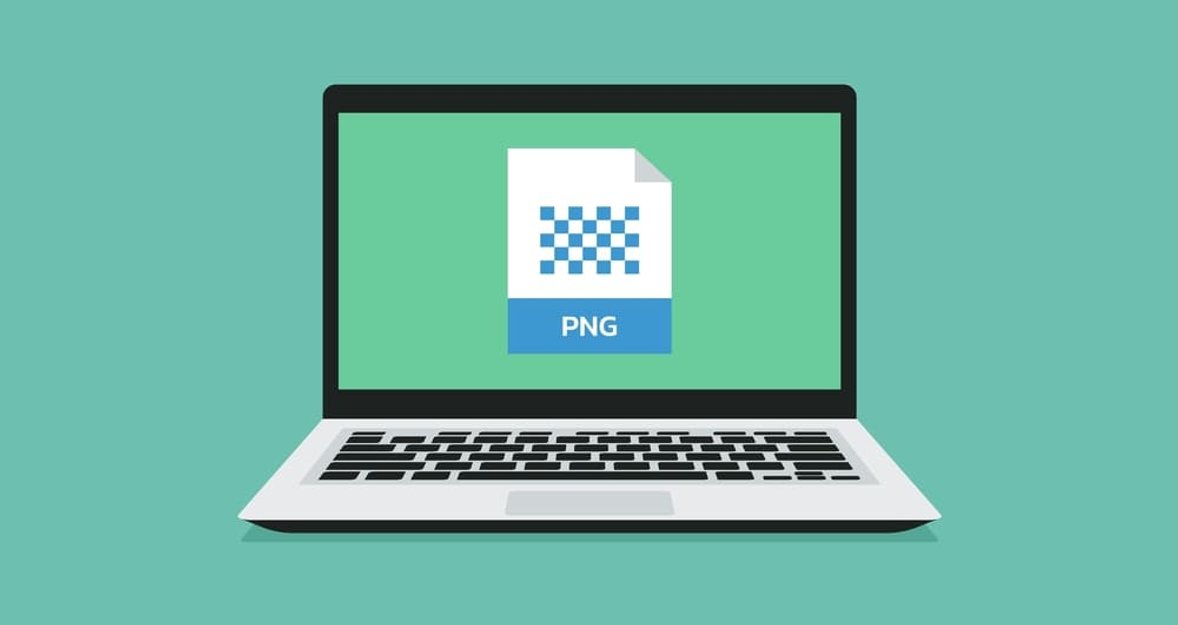What Is a PNG File? How to Open PNG Photo on any Device
August 13, 2023

Learn about PNG files and how to open them on various devices. Our guide provides essential information for viewing PNG files and managing them effectively.
Several image formats exist, each with its characteristics and intended uses. Here are some of the most common forms: JPEG, PNG, GIF, TIFF, BMP, RAW, JP2, HEIF, and SVG.
These are just a few examples of the many available.
The choice of format depends on factors such as the intended use of the pictures, the required level of compression, whether transparency is needed, and the balance between the size and quality of the image. In this article, we will analyze this format in more detail and will try to give you comprehensive answers to the following:
What is the PNG meaning?
What programs and services will help us read PNG files?
Can you edit a PNG file?
And probably the most urgent one: What should we do if the PNG file is not opening?
Did you find something that interests you? Keep reading!
What Is A PNG File?

PNG is an acronym for Portable Network Graphics, a widely used image file format for storing images using lossless compression. This format originated as a replacement for the legacy GIF (Graphics Interchange Format), which was limited by its reliance on its compression algorithm. It is widely used on the Internet and in various digital media because it offers several advantages: lossless compression, extensive color support, metadata, interlacing, and transparency. Let's talk about these and other benefits of using PNG. We will also define the disadvantages and limitations of working with this format to give you a holistic impression.
Advantages and Disadvantages of PNG Files
Pros | Cons |
|
|
Various Areas Of Using PNG
PNG is a form of raster file. That means they're built using a fixed number of color pixels rather than the mathematical algorithms used in vector files. Raster images work better for detailed graphics and photos, whereas vector pictures are usually better for logo designs and illustrations. One of the vivid examples of the vector format is SVG. Read more in our article.
Due to their unique features and capabilities, you can face PNGs in many areas:
PNGs are essential for web design, graphic design, and app development. Due to their ability to preserve details and sharp edges, they are commonly used for logos, icons, banners, and simple animations (APNG).
PNGs are widely used in educational and business presentations to maintain image precision. This format is ideal for screenshots, technical guides, graphs, charts, and infographics, as it ensures clarity and color accuracy in those materials.
Photography and visual art projects, where preserving quality is essential, also use PNGs. They are also favored in print media for logos and high-resolution graphics. Moreover, this format is used even in medical imaging to preserve fine detail and clarity in pictures such as X-rays, scans, etc.
What Do PNG Files Offer that JPG Files Do Not?
 In fact, this is one of the most common questions asked by Google users. Let's try to answer it quickly. PNG files have several advantages over JPG files.
In fact, this is one of the most common questions asked by Google users. Let's try to answer it quickly. PNG files have several advantages over JPG files.
Firstly, PNG uses lossless compression, which means that the image retains its original quality and does not lose details even after multiple saves. Therefore, this format is ideal for repeated editing. JPG cannot boast this.
The second key advantage of PNG files over JPGs is the support for transparency, which allows you to create images with a transparent background, as you might expect. This is especially useful for logos, web design, or any images that need to be overlaid on other visual elements.
And thirdly, PNG files are better suited for graphics, illustrations, and images with text or sharp lines because they retain sharper details. JPG files can cause blurring and artifacts in such images due to the nature of their compression, which we mentioned above.
Thus, PNG provides higher quality preservation, transparency, and better editing capabilities, while JPG provides smaller file sizes, but at the cost of quality and flexibility. And that's it. Essentially, the choice between JPG and PNG depends on the format of your work.
How To Open A PNG File?
 Opening a PNG image is usually straightforward, as it is a widely supported image format. Any internet browser and graphics editor will help you. Most modern operating systems have native applications to view PNG files, so you need to double-click the picture to open it. Let's figure out how to open our images on various devices, depending on what you have.
Opening a PNG image is usually straightforward, as it is a widely supported image format. Any internet browser and graphics editor will help you. Most modern operating systems have native applications to view PNG files, so you need to double-click the picture to open it. Let's figure out how to open our images on various devices, depending on what you have.
Method 1: Use a Built-in Tool in Your Device
Option 1: Windows PC
View PNG files easily on your laptop or computer. Double-clicking on the image should open it in the default image viewer (often Windows Photos). If the operating system can't open a PNG file, you get a “Windows can't open a file” error message. In this case, you need to look for an application that can do it. Right-click on the picture, select “Open with,” and choose a different image viewer if you have one installed, such as Luminar Neo, Adobe Photoshop, GIMP, or IrfanView.
You can find many more just by searching the Internet for “PNG viewer,” “PNG file opener,” or “open PNG” in the search engine of your choice. Install the program you found and check if it can open your image.
Option 2: macOS
How to open a PNG file on Mac? Similar to Windows, find the needed picture with the macOS Finder. Double-click on it, which should open in the default Preview app. You can also right-click on the image, select “pen With,” and select another image viewer or editing software.
If it can not be opened in a macOS application, you get a “There is no application set to open the file” message. You should click “Search App Store” in the error dialog, and the system will show you different PNG file readers.
Option 3: Linux
Like Windows and Mac, you can usually double-click the picture to open it with the default image viewer. Common viewers include Eye of GNOME and Gwenview.
Method 2: Smartphones and Tablets (iOS and Android)
 IOS and Android devices have built-in support for viewing .png files through the Files and Photos apps. So, how to open a PNG file on an iPhone? Basically, you need to do three steps only:
IOS and Android devices have built-in support for viewing .png files through the Files and Photos apps. So, how to open a PNG file on an iPhone? Basically, you need to do three steps only:
1. Navigate to the file.
2. Tap on it to open.
3. View the image.
Android works the same way. Tapping on a picture in your device's file manager or gallery app should open it automatically. Please note that the exact steps might vary slightly depending on the device's manufacturer and the version of Android you're using.
PNGs are often associated with image apps on mobile devices, but you can also use third-party image viewer apps from the respective app stores.
Using Third-Party Apps: You can also use third-party apps from the App Store designed for image viewing, editing, and management. Some popular options include Google Photos, Adobe Lightroom, and Microsoft OneDrive.
Opening PNG files from Messaging Apps: If you received the PNG through a messaging app or downloaded it from the Internet, you can tap on it within the app to open and view it.
Method 3: Web Browsers
 Every modern web browser, like Safari, Microsoft Edge, Mozilla Firefox, and Google Chrome, has a built-in PNG reader to view images without additional software or plugins. This feature is especially useful for quickly previewing images, sharing visual content, and viewing website graphics. There are several ways what opens PNG files:
Every modern web browser, like Safari, Microsoft Edge, Mozilla Firefox, and Google Chrome, has a built-in PNG reader to view images without additional software or plugins. This feature is especially useful for quickly previewing images, sharing visual content, and viewing website graphics. There are several ways what opens PNG files:
Make sure the image is saved on your device or available online.
Open your preferred web browser.
Drag and drop the PNG file directly into the browser window. Locate the image in your file explorer or on your desktop, click and hold it, then drag it into the browser.
Alternatively, some browsers have an “Open File” option in the menu. Click on it, navigate to the PNG file on your device, select it, and the browser will display it.
If the image is online, clicking a direct link will automatically open and display it in the browser.
You can also right-click (or control-click on Mac) the PNG file, select “Open with,” and choose your web browser.
Bottom Line
The PNG format is essential for its lossless compression and transparency support. It’s ideal for preserving sharp details in icons, logos, and web graphics. Its ability to maintain quality while supporting transparent backgrounds is crucial for web design, user interfaces, and digital art.
However, PNG isn't commonly used in professional photography. Formats like JPEG and RAW are preferred, and PNG file sizes are impractical for high-resolution photos.
Now you know more about this amazing image format and how easy opening .png files is. Steps may vary depending on your system and apps. If issues arise, download an image viewer from an app store. With this knowledge, you can confidently work with PNG files. Learn how to create a PNG file from other articles in our blog.





